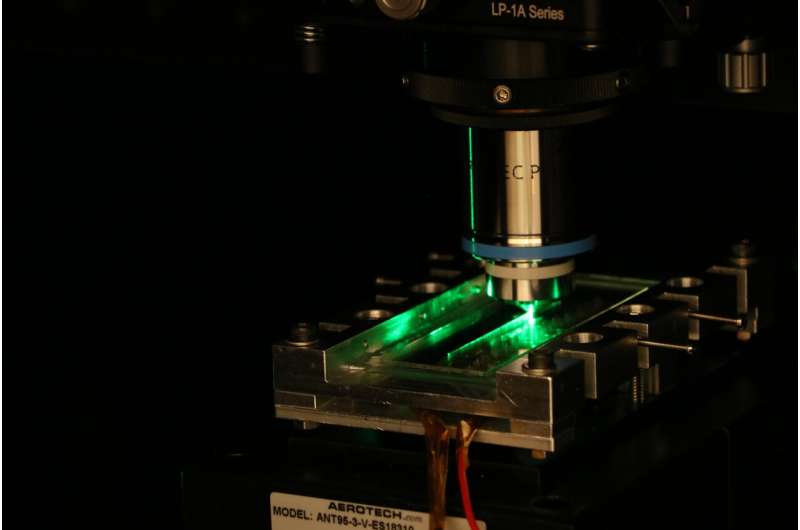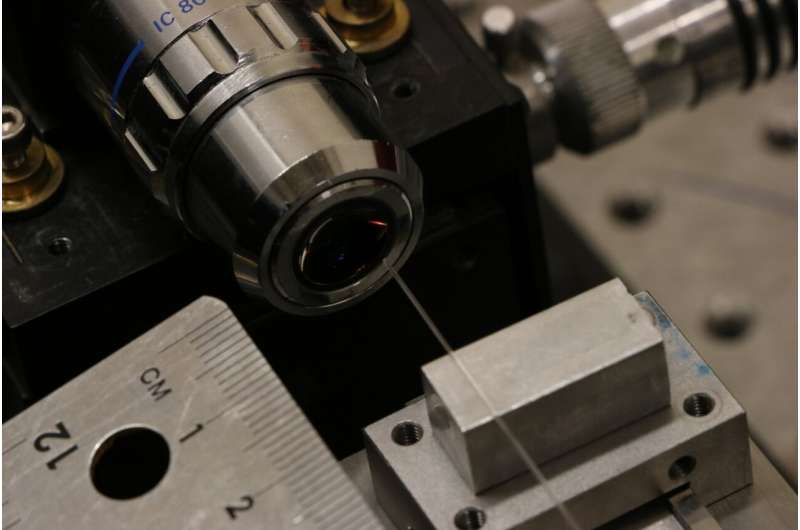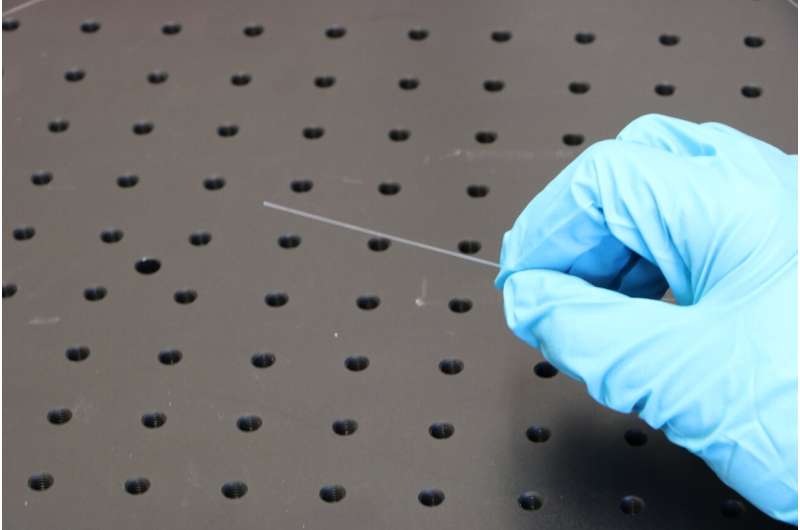Sapphire fiber could enable cleaner energy and air-travel

Oxford University researchers have developed a sensor made of sapphire fiber that can tolerate extreme temperatures, with the potential to enable significant improvements in efficiency and emission reduction in aerospace and power generation.
The work, published in the journal Optics Express, uses a sapphire optical fiber—a thread of industrially grown sapphire less than half a millimeter thick—which can withstand temperatures over 2000°C. When light is injected onto one end of the sapphire fiber, some is reflected back from a point along the fiber which has been modified to be sensitive to temperature (known as a Bragg grating). The wavelength (color) of this reflected light is a measure of the temperature at that point.
The research resolves a 20-year-old problem with existing sensors—while the sapphire fiber seems very thin, in comparison to the wavelength of light it is huge. This means that the light can take many different paths along the sapphire fiber, which results in many different wavelengths being reflected at once. The researchers overcame this problem by writing a channel along the length of the fiber, such that the light is contained within a tiny cross-section, one-hundredth of a millimeter in diameter. With this approach, they were able to make a sensor that predominantly reflects a single wavelength of light.
The initial demonstration was on a short length of sapphire fiber 1 cm long, but the researchers predict that lengths of up to several meters will be possible, with a number of separate sensors along this length. This would enable temperature measurements to be made throughout a jet engine, for example. Using this data to adapt engine conditions in-flight has the potential to significantly reduce nitrogen oxide emissions and improve overall efficiency, reducing the environmental impact. The sapphire's resistance to radiation also gives applications in the space and fusion power industries.

Research team member Dr. Mohan Wang, Department of Engineering Science, University of Oxford said:
"The sensors are fabricated using a high-power laser with extremely short pulses and a significant hurdle was preventing the sapphire from cracking during this process."
Mark Jefferies, Chief of University Research Liaison at Rolls-Royce plc said, "This is exciting news and yet another important scientific achievement resulting from our long-standing partnership with Oxford University. This fundamental research could in time enable more efficient and accurate multi-point temperature measurement in harsh environments, improving control, efficiency, and safety. We look forward to working with the University of Oxford to explore its potential."

Rob Skilton, Head of Research at RACE, UK Atomic Energy Authority said, "These sapphire optical fibers will have many different potential applications within the extreme environments of a fusion energy powerplant. This technology has the potential to significantly increase the capabilities of future sensor and robotic maintenance systems in this sector, helping UKAEA in its mission to deliver safe, sustainable, low carbon fusion power to the grid."
The full paper "Single-mode sapphire fiber Bragg grating" can be read in Optics Express.
More information: Mohan Wang et al, Single-mode sapphire fiber Bragg grating, Optics Express (2022). DOI: 10.1364/OE.446664
Journal information: Optics Express
Provided by University of Oxford




















